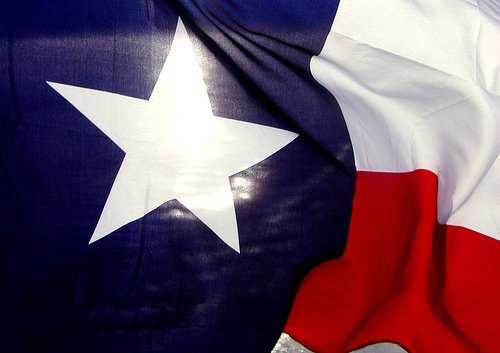The pay phone by the cattle barn was ringing and ringing and no one was answering it. I was in my senior year in high school and it was County Fair time, and we were at the fairgrounds with our animals early one morning during the first week of school. Since no one was answering the phone, my buddy Deane (Farns) egged me on to answer it. So I did. “Fair Grounds Cattle Barn” I said into the phone. “Is Pete there?” came the reply. “I don’t see anyone here but me and Farns”, I said. “Come on, let me talk to Pete”, the female voice on the phone replied. “Mam”, I said, “there is no one here named Pete.” She asked, “Isn’t this Pete’s DoNut Shop?” “No, I replied, “this is the cattle barn at the fair grounds”. “Now she was getting irritated, “Come on, I know that this is Pete’s DoNut shop, and I need to talk to Pete!” Now I was my turn to have some fun. “I’m sorry”, I said, “but Pete got tired of the “hole” business and left.” She hung up!
The Santa Clara County Fair took place during the second week of September, which was also the first week of school. As exhibitors, we had “Exhibitor” passes, and we had 24 hour access to the fair grounds. Because we had animals at the fair, we were also excused from afternoon school classes during the first week. In fact, everyone in Ag just went straight to the fair in the mornings and stayed all day. The school teachers and administrators sort of looked the other way because we were good kids. So, our first week of school took place at the fair grounds. And in the early mornings when donut shops were open and normal people were not at the fairgrounds, we were there to answer the pay phone at the Cattle Barn.
Driver Education was a part of Sophomore Social Studies. We had classroom training for 6 weeks, then were scheduled to drive. The school had three Driver Ed cars and were parked in the Ag compound. Driving was 5 days long and the assignments for driving were made during the first week of school. So instead of getting signed up to drive, I was fooling around at the fair grounds. I didn’t get to drive until the last week of school, in June. Of course my birthday being in August, I could get my learner permit in February. So by the time it was my turn to drive, I was a veteran driver of 4 months! Unlike my own children’s driver ed classes where we had to pay hundreds of dollars over the years for all 8 kids, mine was part of the school curriculum and paid for by the over taxed California tax payers.
The midway at the fair afforded many opportunities to meet girls and have a lot of fun. As we boys sat around the cattle barn each morning, we would tell of our exploits of the night before about all the girls we met. The truth was we never “really met” any girls. Farns and I would just walk around and look at girls. Neither one of us actually had the courage to talk to any one of them. And neither one of us came from well-to-do families, so we didn’t ride many rides either. We just walked around and watched. I do have to confess that one year I was able to make a little money at the fair. There was one booth where you pitched nickels onto a table that had “Lucky Strike” logos all over the top. The object of the game was to get the entire nickel on the logo. If you did, you won a pack of cigarettes. Of course, you had to be 18 to play. And the barker took your word for it. There were several booths with similar games, but the operators kept those tables well waxed so the nickel just slid off the table, but in this one particular booth the table was not waxed and the nickel just stopped where it landed, or slid just a little. It was pretty easy to win. So I would pitch my nickels and win packs and packs of smokes. But I didn’t smoke. But all my friends did and smokes cost 30 cents. So I sold them for 20 cents. I had plenty of buyers, and had plenty of money to keep playing, and selling. I made enough money to keep a little jingle in my pocket.
One thing Farns and I figured out really quick was where the free food was. And it was there every day. Inside the commercial exhibition tent, business handed out samples of their wares. Two local bread bakeries handed out slices of bread sealed in a plastic wrapper. Several meat and cheese purveyors also handed out slices of lunch meat and American cheese. So with a stroll or two thru the tent, we had lunch! A local dairy was giving out half pint cartons of milk, so we had it all. By the end of the fair, though, they had wised up and it was harder to get free food from them. But by then my little enterprise was working well and I could buy a hotdog on a stick or an ear of corn on the midway. I guess that is why I have always liked midway foods.
During the summer time the free labor of Ag students disappeared. The school orchards still were in need of care, as were the animals at the ranch. The school district would hire a students for the summer to care for the orchards and ranch. Each of the schools had orchards. The summer between my Junior and Senior years, I was hired for that job at Lincoln. I think one of the qualifiers for the job was need, and I was from a single parent home. All the other kids in class had Dad’s at home, and in the 50s and 60s, most had good incomes. So I got the job.
The biggest part of the job was caring for the orchard. The school contracted out the harvesting of the apricots and prunes to commercial canners, but we had to care for the trees. Mostly that consisted of irrigating the orchard. The animals at the school ranch needed daily care and each school had a month in which they cared for the farm. My month was July.
When it was time to irrigate, I could hire two helpers. Irrigation generally took 5 days. I couldn’t hire until I was ready to turn water into the orchard. For several days I would use the tractor and an implement (can’t remember what we called it) attached to the tractor to put up irrigation checks and ditches. Irrigation checks are a series of small dams put up around groups of trees that hold the water. The ditch carries the water from the well to the trees. Irrigation could be labor intensive as we had to direct the water to the correct trees, and this was done manually with a shove, and It was very muddy.
One of the guys I hired was Eddie. He worked for his uncle who trucked watermelons to San Jose from the Imperial Valley of South Central California. So every day Ed would bring a couple of watermelons to work. We put them in the irrigation ditch because the water was really cold. By the time we were ready for a break, or lunch, they melons were ice cold. Good times!
I had quite a shock the first day of July when I went out to the school farm to feed the animals. Several of the sheep were dead! I had to drive back to a gas station several miles from the farm to call Mr. Ralston (no cell phones in 1962). He told me to load them up in the truck and take them to the Tallow Works next to the slaughter house (where I last saw Mendel) I got a buck a piece for them! Mr. Ralston told me keep the money! Fortunately, the animals were insured so the students didn’t lose money. I think replacement sheep were purchased. The next day there were several more dead sheep. I think we lost about 15. It turned out that the student, my counterpart, from San Jose High School fed the sheep too much grain. And sheep, not being the smartest animals on the farm, will eat until their stomachs burst. I find it odd that we say someone “eats like a pig”. It should be “like a sheep”. Pigs will eat only until they are full…sheep will eat until they are dead. The sheep that were dead on the second day died from the first over feeding. I made sure I fed exactly what was on the schedule.
For an Ag class project, the class planted an acre of tomatoes that spring. When they were ready at the end of May, we picked them and took them to the cannery and sold them. We learned we had to be very gentle with the fruit because the cannery wouldn’t buy damaged fruit. We had some culls, but in the end, we sold most of the fruit. Since I knew in early April that I would have the summer job, I decided to plant a half acre for another of my projects. I wasn’t going to sell them to the cannery for pennies, when I could do much better with a stand, and with care, the plants would produce all summer. I bought my plants when we got plants for the class project. Tomato plants cost something like a penny a piece, or a penny for two. Anyway, I planted a half acre. Another student planted a few rows himself, but quickly lost interest and gave them to me. I harvested boxes of tomatoes every day when they were ready. I put a sign up in front of the school and one in front of my house. “VINE RIPE TOMOATOES. 5 FOR 25 CENTS” Had people stopping in all the time. Very little fruit was wasted, and I got an A on the project.
My biggest disappointment that summer was over my Elberta Freestone Peaches. The orchard had a lot of cling peaches, which, like the cots and prunes, were contracted out to a commercial cannery. But there was a small section with a half dozen Elberta Freestone Peaches. Those are the best for canning, and are the most expensive to buy at the grocery store. As part of my compensation for the summer, I got the peaches! I could keep them, or I could sell them, but I had to harvest them. My mother was excited because she was going to can them. As the summer was coming to an end, my peaches were about ready to harvest. Finally, they were ready and I would pick them on Monday. On Friday I got the ladders out and the crates to put the peaches in. On Monday morning when I got to work, the trees had been picked clean! I was ticked. I found out that a kid in the younger Ag class and his family climbed the fence and picked the peaches. So my dreams of yummy peaches ….. !
TO BE CONTINUED








0 Read My Post:
Post a Comment